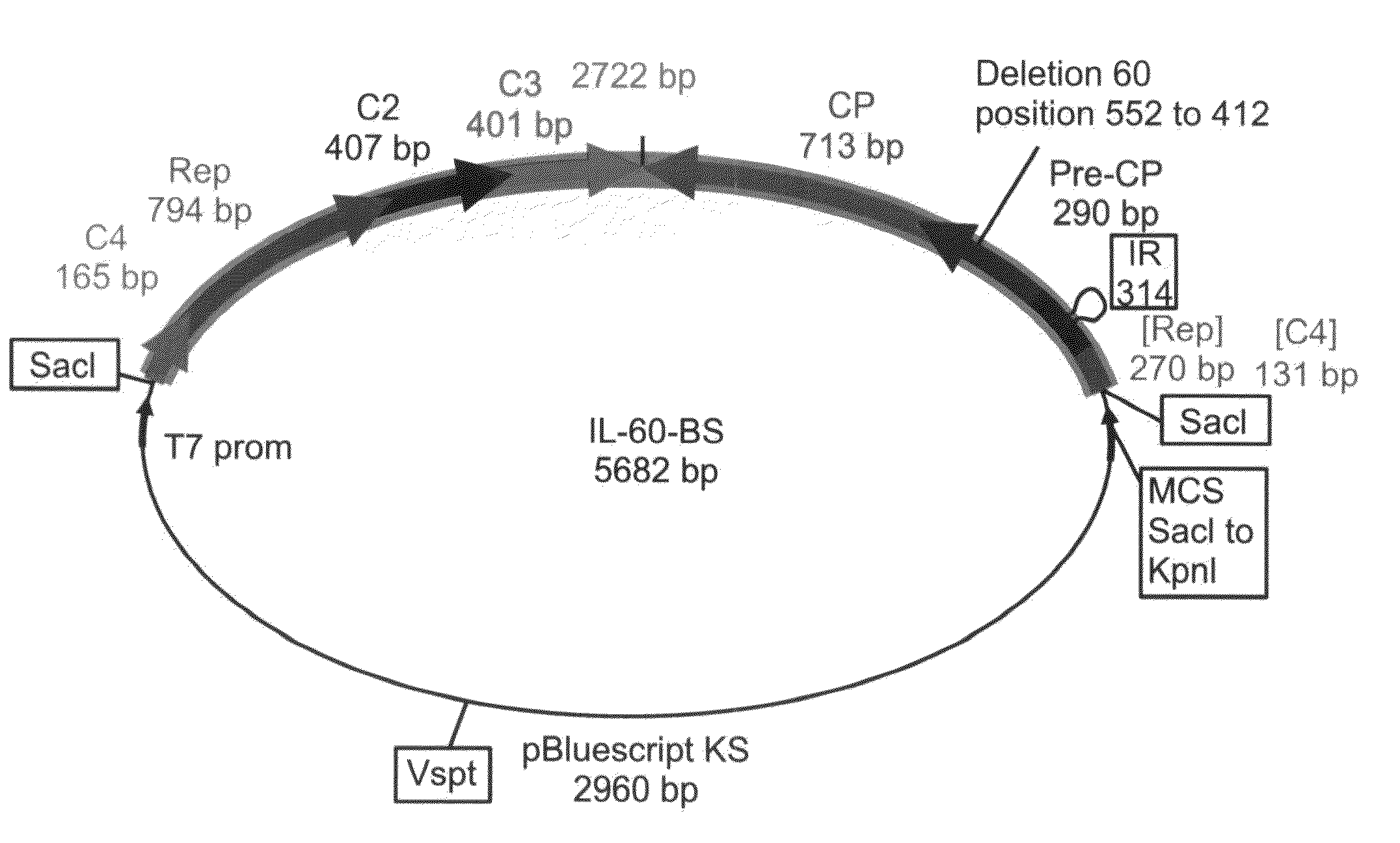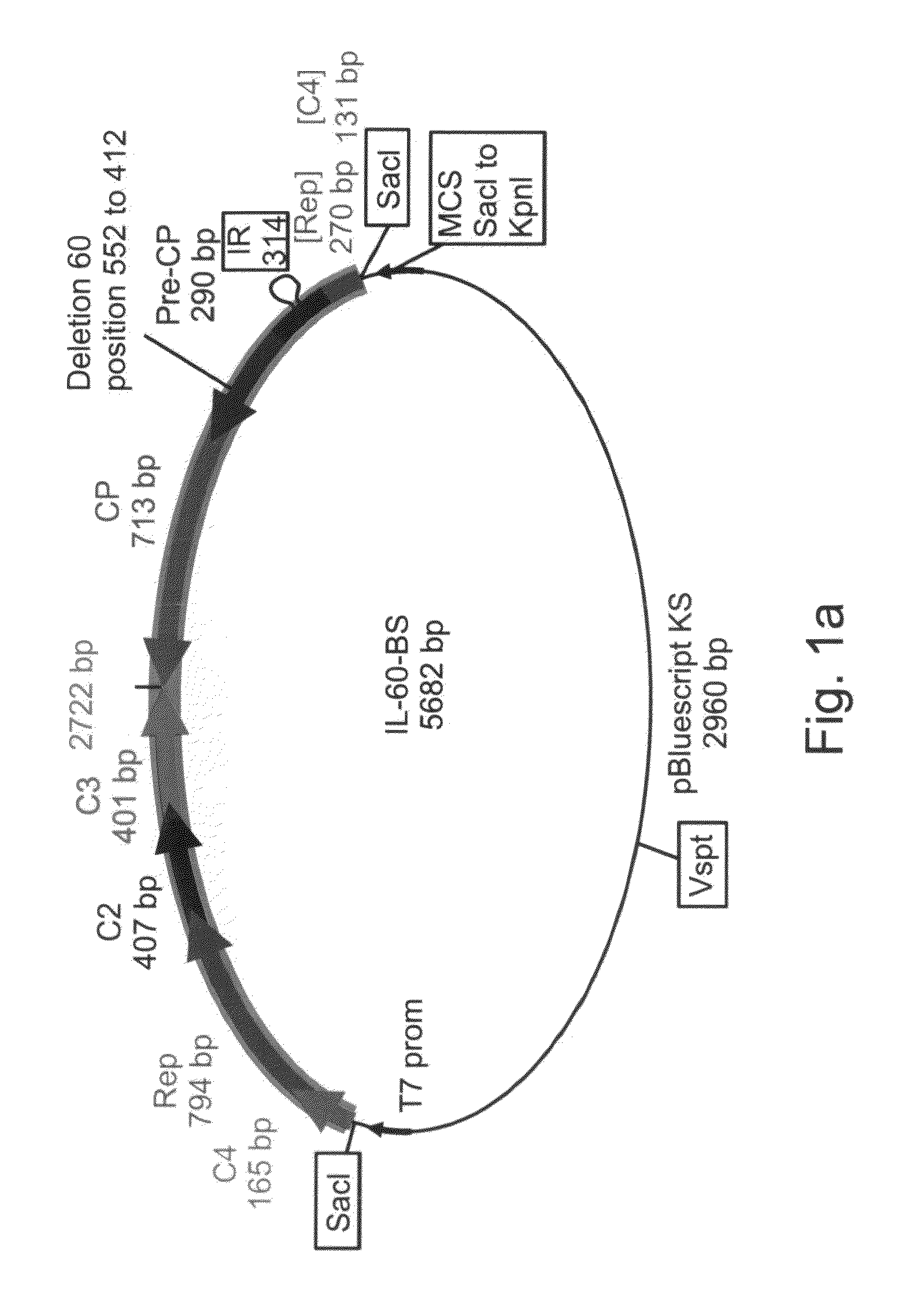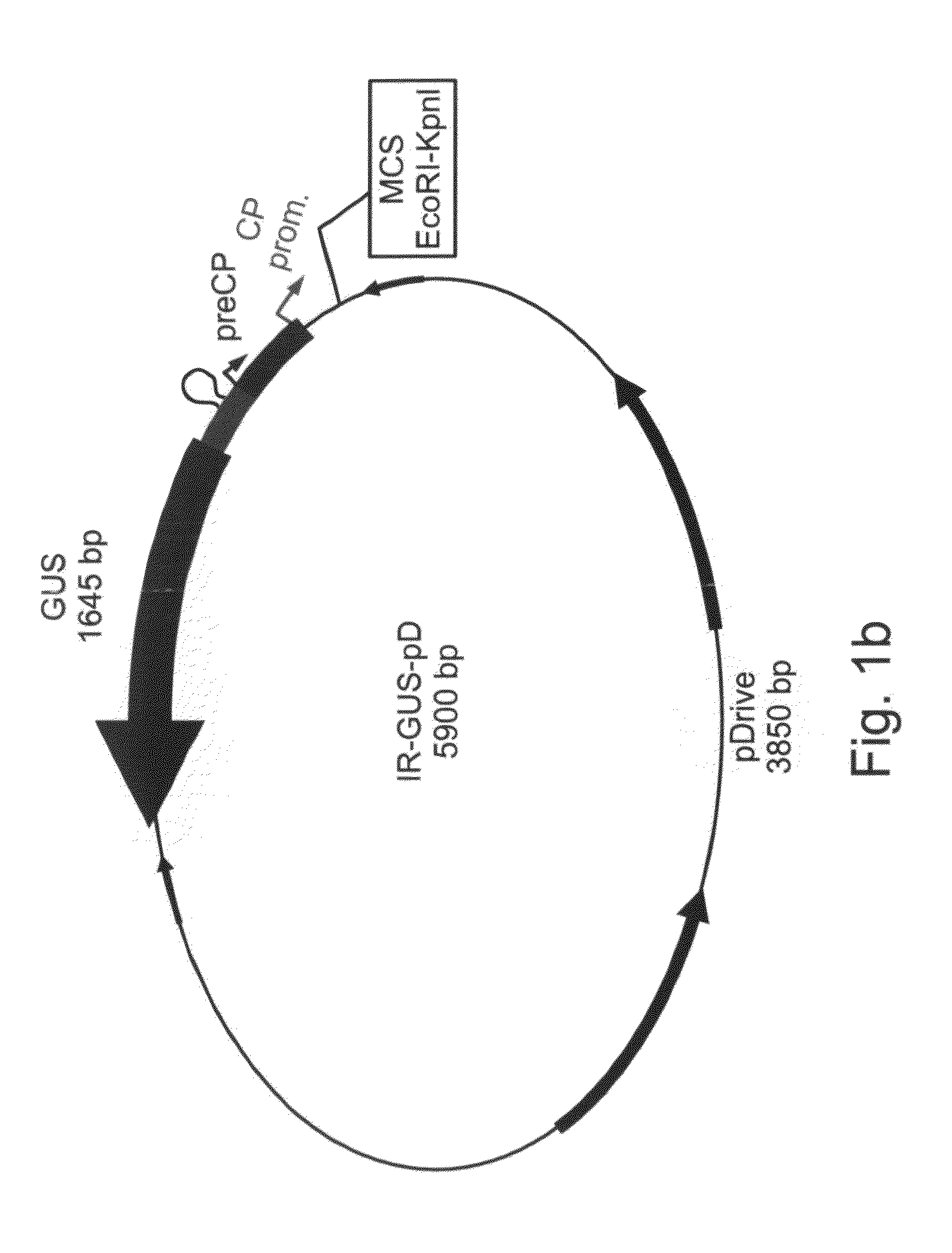Plant Expression Constructs and Methods of Utilizing Same
- Summary
- Abstract
- Description
- Claims
- Application Information
AI Technical Summary
Benefits of technology
Problems solved by technology
Method used
Image
Examples
example 1
Construction of Geminivirus-Based Expression Vectors
[0210]TYLCV, IL-60, IL-60-BS and reporter gene derivative plasmids were either agroinoculated or injected into tomato plants and their replication and spread was monitored with symptom observation, PCR analysis and Southern blot. The expression of viral and reporter genes was assessed using PCR, Northern and Western analysis, GUS staining and GFP fluorescence as described above in methods and materials.
[0211]Changes in the characteristics of the IL-60 and IL-60-BS constructs—The capsid protein (CP) of Geminiviruses has no role in viral DNA replication but is involved in viral movement and systemic spread in the plant. These characteristics have been mapped to the C-terminal part of CP [Noris, E. et al., J. Virol. 72, 10050-10057 (1998)]. Since one of the critical goals in constructing a vector for introduction of genes into plants, was the maintenance of its spreading capacity, only the N-terminal part of CP was altered by the dele...
example 2
IL-60-BS-GUS Heritability
[0223]Expression of GUS was determined with PCR and GUS staining in both IL-60-BS-GUS carrying parental plants, and their progeny as described above in methods and materials.
[0224]IL-60-BS-GUS is not heritable—while the parental plants showed positive results for retention of the IL-60-BS-GUS (FIG. 2 lane 15) in all PCR amplifications, and expressed GUS 12 months post injection, 19 out of the 20 tested progeny did not show positive results with any of the PCR amplifications (part of the progeny tested is given in FIG. 6) and did not express GUS. Parental plant and controls are shown in FIG. 2 (parental plant—lane 15).
[0225]Geminiviruses are not seed-transmissible [Kashina, B. D., et al., Phytoparasitica 31, 188-199 (2003)]. Analysis of GUS-expressing plant progeny indicated that the cloned trait is not maternally inherited. The single occasion where weak GUS expression was noted in a progeny plant (lane 2 in FIG. 6) is probably due to “mechanical” vector con...
example 3
IL-60-BS Transmissibility
[0227]Transmission of IL-60-BS by B. tabaci was tested by PCR of DNA from plants exposed to insects previously exposed to plasmid carrying plants
[0228]Wild TYLCV is transmitted by the whitefly, Bemisia tabaci. To test whether the viral vector is also transmitted through a viral natural transmitter, plants carrying the IL-60-BS vector were fed to B. tabaci. Insects were then transferred to tomato plants that do not carry the vector, and transmission of the vector was assessed with PCR. Results show that plants to which insects were transferred did not carry the IL-60-BS vector. These results further substantiate the ability of the present invention to serve as a safe vector for introduction of new traits to selected plants, without succumbing to the risk of these traits being transferred to other less desired plants.
PUM
| Property | Measurement | Unit |
|---|---|---|
| Digital information | aaaaa | aaaaa |
| Digital information | aaaaa | aaaaa |
| Electrical resistance | aaaaa | aaaaa |
Abstract
Description
Claims
Application Information
 Login to View More
Login to View More - R&D
- Intellectual Property
- Life Sciences
- Materials
- Tech Scout
- Unparalleled Data Quality
- Higher Quality Content
- 60% Fewer Hallucinations
Browse by: Latest US Patents, China's latest patents, Technical Efficacy Thesaurus, Application Domain, Technology Topic, Popular Technical Reports.
© 2025 PatSnap. All rights reserved.Legal|Privacy policy|Modern Slavery Act Transparency Statement|Sitemap|About US| Contact US: help@patsnap.com



